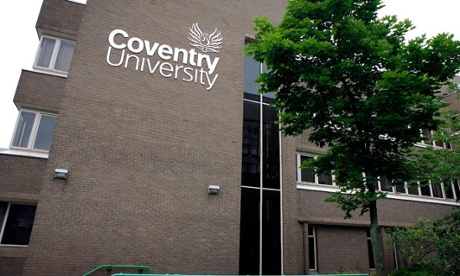
The Confederation of British Industry (CBI) has produced guidance for companies on how to work effectively with academics, as businesses spend record amounts on contract research projects with UK universities.
A report by the umbrella body in partnership with Middlesex University said universities have made huge strides in developing ways to support industry.
The report said that more and more businesses of all sizes recognise this, but others are held back from doing so by uncertainty over how to get the best from what universities have to offer.
The CBI refers to Hefce figures which show that in the three academic years up to 2012-13, the amount businesses spent on contract research – where universities have a customer/contractor relationship with companies – at higher education institutions grew at an annual rate of more than 6% to over £440m.
Companies also spent increasing amounts on consultancy services, use of facilities and equipment, and training and professional development – investing £400m in 2012-13.
It is likely that this figure will grow further, according Neil Carberry, director for employment and skills at the CBI, who said that small and medium-sized companies are increasingly keen to work with universities.
“Research collaboration isn’t a new area,” he said, “but there is now an understanding that there are different sorts of collaboration that are suitable to different types of businesses.”
The CBI report encourages universities and businesses to explore new arrangements for collaboration – from contract research to company-sponsored doctorates and the hiring of university equipment.
“As you move out from the likes of Rolls-Royce into medium-sized companies there’s less experience, and maybe the structures that suit a big manufacture are not going to suit a smaller company,” said Carberry.
A survey carried out by CBI and Pearson Education found that more than two thirds (70%) of the businesses had developed links of some kind with universities, while nearly half (48%) were looking to grow their university ties in the future.
However, although industry and universities do appear to be collaborating more, the differing priorities held by either side is hampering progress, said Mike Boxall, higher education expert at PA Consulting Group.
“There are built-in contradictions between the two systems. Universities are often much more concerned about the standing of their research in terms of citations and league tables and how they compare with their peers,” Boxall said.
For individual academics, he added, working on research collaborations with industry pulls them away from the things that matter to their career promotion and esteem.
Boxall said that the tighter restraints on research funding may be stirring universities into action.
“There’s an expectation that in the spending review after the election the ringfencing of the research budgets is going to be difficult to sustain,” he said. “Even within that, the research funding that has been around has been concentrated on a few universities, so it’s becoming more important that institutions find other sources of getting revenue for their research.”
Institutions are also becoming increasingly focused on the local growth agenda. “The game is shifting and everything is becoming much more focused – both in terms of talent development and applications of knowledge – on a local level,” said Boxall.
Carl Perrin, the director of the Institute for Advanced Manufacturing and Engineering (AME) at Coventry University, which was set up in partnership with Unipart Manufacturing, said that partnerships work well when both parties’ aims are recognised.
“While both universities and business bring something different to the collaboration, they’re both looking for something different out of it,” said Perrin, “and at times, they’ll measure success in different ways. It’s important to bring those two things together.”
The CBI report points to Coventry University, which set up AME on a Unipart site, as an example of good practice. The 1,700 square metre building is part-funded by £7.9m from the Hefce Catalyst Fund and is used for teaching and research.
University researchers work alongside company engineers on projects relating to Unipart’s technology roadmaps, while undergraduates carry out practical work on the shop floor.
“One of the pitfalls of developing new technology and research is about commercialising it and taking it through to a real solution that is actually beneficial and that we can make a business out of,” said Perrin. “Co-locating people and making them work together can help bridge that gap.”
Working in partnership with industry can allow academics to prove the value of their research and to find practical applications for it, Carberry added.
“If you look at how research funding is distributed, it’s all about impact, and you can have no greater impact than by working with a local small or medium-sized company, doing something that’s going to create jobs and build an industry in that area for years to come.”
Join the higher education network for more comment, analysis and job opportunities, direct to your inbox. Follow us on Twitter @gdnhighered.

